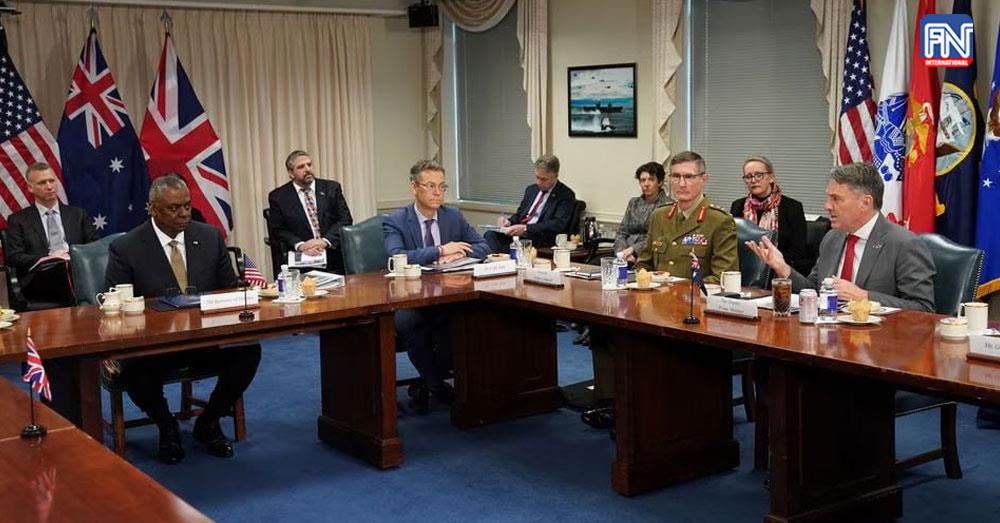WASHINGTON, March 1 (Reuters) - More work is needed to break down bureaucratic barriers to technology sharing in the second pillar of a trilateral defense agreement between Australia, Britain and the United States, British and Australian defense officials said on Wednesday.
Shimon Fhima, director of Strategic Programmes at Britain's Ministry of Defence, made the comment referring to part of the 2021 AUKUS agreement dealing with advanced technology programs such as artificial intelligence and hypersonic weapons.
Speaking at a virtual event hosted by Washington's Center for a New American Security think tank ahead of an expected announcement of a way forward on AUKUS after an 18-month consultation period, Fhima cautioned that their adversaries did not share such bureaucratic constraints.
He said the political will was "absolutely there to ensure that the barriers that we have are broken through," but this took time.
Referring to the so-called Pillar One of the AUKUS agreement - under which Australia is to acquire nuclear-powered submarines, Fhima added:
"The willingness to share really sensitive technologies and capabilities in Pillar One; if we can do that, and we can do that at pace, we must be able to do that in Pillar Two."
Asked if enough progress was being made in Pillar Two, Stephen Moore, first assistant secretary of defense industry policy at Australia's Department of Defense, said there was "a frustration, I think amongst all of us, that our bureaucratic processes need to be better."
He added: "We know our bureaucracies need to be more agile, better equipped to face some of the strategic challenges that we are looking at, and I think there is momentum there."
The officials did not address details of how Australia will acquire nuclear powered submarines under AUKUS to counter the increasing threat posed by China in the Indo-Pacific region.
Leaders from Australia and Britain are expected to travel to Washington this month to announce the way forward.
The United States and Britain each have closely guarded nuclear submarine programs and the three allies have yet to say exactly how the capability will be transferred to Australia, which does not have a domestic nuclear propulsion industry.
U.S. defense technology sharing is tightly controlled under International Traffic in Arms Regulations and it remained unclear whether Australia will acquire a U.S. or a British designed submarine and when.
The capabilities in Pillar Two of the AUKUS agreement are seen in part as a way to close a capability gap in the meantime.
Australia's former defence minister said on Wednesday he favored Australia choosing a U.S. nuclear-powered submarine over a British model, comments swiftly labeled "irresponsible" by the government.





